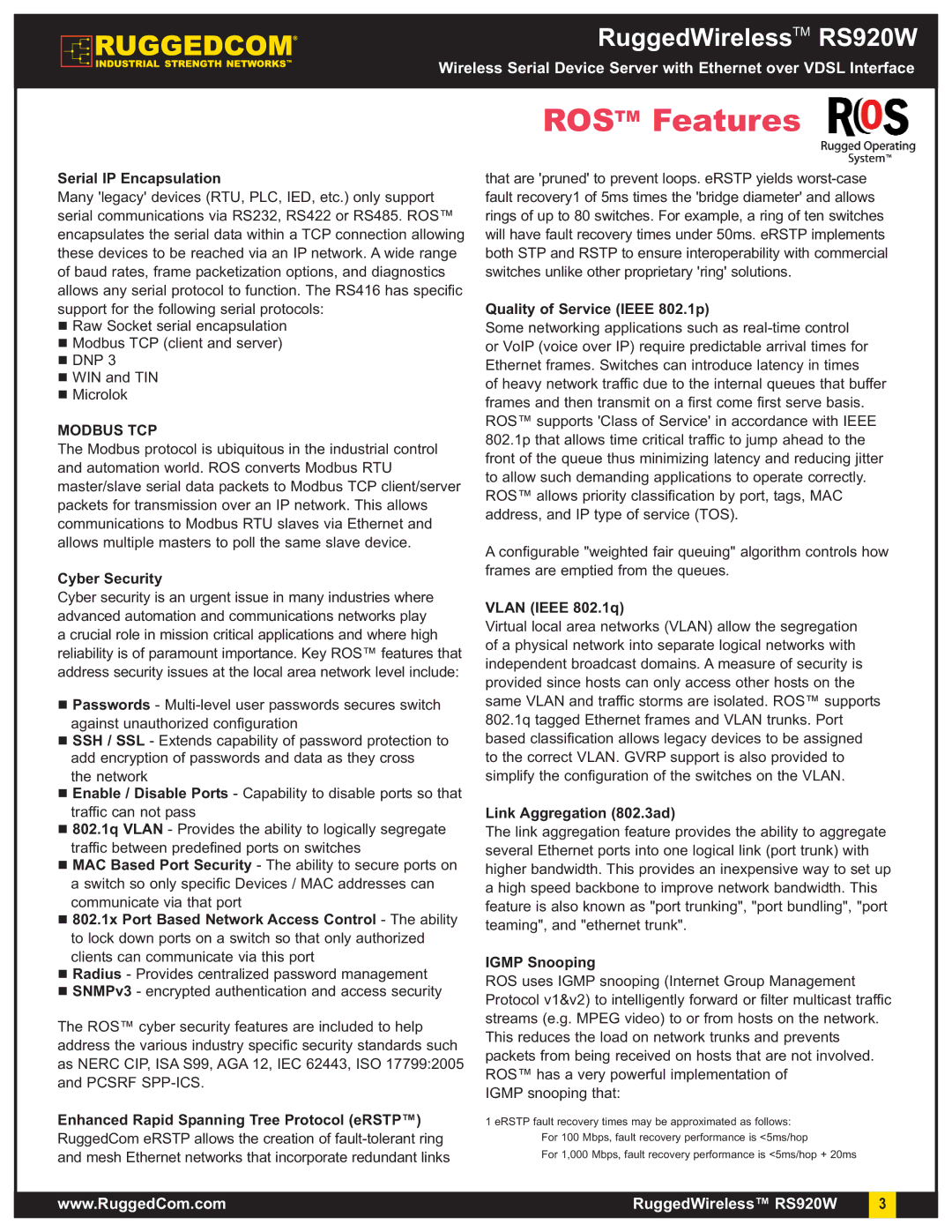RS920W specifications
The RuggedCom RS920W is a high-performance wireless communication solution designed for industrial environments. This robust device is tailored to meet the demands of critical applications, ensuring reliable connectivity in harsh conditions. The RS920W is ideal for industries such as utilities, transportation, and oil and gas, where traditional networking solutions may falter.One of the standout features of the RS920W is its dual-band capability, operating on both 2.4 GHz and 5 GHz frequencies. This flexibility offers enhanced connectivity options, reducing interference and supporting a higher density of wireless devices. The device supports the IEEE 802.11a/b/g/n standards, ensuring compatibility with a wide range of existing networks while enabling high-speed wireless communication.
The RS920W is designed to withstand extreme environmental conditions. With an operating temperature range of -40°C to +85°C, it can function effectively in both hot and cold climates. Its rugged design, including a robust aluminum housing, provides protection against dust, moisture, and vibrations, making it suitable for installation in demanding industrial locations.
Another critical technology integrated into the RS920W is secure data transmission. The device supports advanced encryption protocols, including WPA2, ensuring that communications remain confidential and protected from unauthorized access. Additionally, the RS920W features a built-in firewall, which helps to safeguard against potential cyber threats.
The RS920W also offers a variety of networking options, including support for multiple VLANs and Quality of Service (QoS) features. These capabilities allow users to prioritize critical applications and ensure that bandwidth is allocated efficiently across the network. This is particularly important in industrial settings where real-time data transmission can be crucial.
Furthermore, the RuggedCom RS920W is equipped with extensive management capabilities. It supports various network management protocols, such as SNMP, and provides a web-based user interface for easy configuration and monitoring. These features simplify the management of wireless networks, enabling quick troubleshooting and maintenance.
In conclusion, the RuggedCom RS920W stands out as a reliable, durable, and secure wireless communication solution for industrial applications. With its advanced technology, robust design, and flexible networking options, it is well-suited to meet the demands of modern industrial environments, ensuring mission-critical communications remain uninterrupted. Whether in the field or within complex manufacturing facilities, the RS920W delivers the performance and reliability essential for today's industrial operations.


